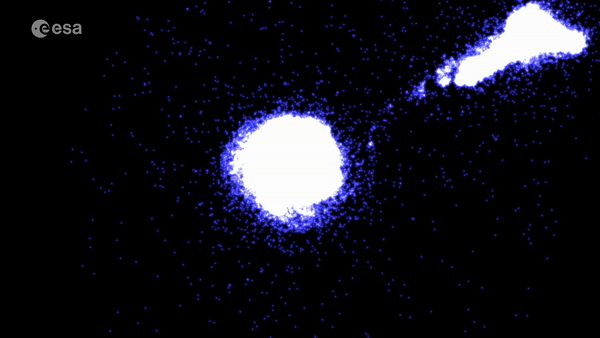mollwollfumble said:
mollwollfumble said:
Just so you know, the famous GAIA spacecraft – mapping half the stars in the Milky Way, remember – is still operating happily.
Launched in 2013, the original 5 year mission has been extended to 31 December 2022 with a possible extension to 31 December 2025, although it may run out of fuel in Nov 2024.
This is an ESA mission, not NASA. It has the goal of determining the position, distance, and proper motion of 1 billion stars.
ESA’s Gaia Early third Data Release (EDR3) was made public on 3 Dec 2020 and includes data on stars. The second data release (DR2), occurred on 25 April 2018. The remainder of the 3rd data release will be in late 2021 and include Solar System data; variability information; results for non-single stars, for quasars, and for extended objects, astrophysical parameters, and data for the Andromeda Galaxy.
The distance to about 20 million stars will thus be measured with a precision of 1% or better, and about 200 million distances will be measured to better than 10%, including the Galactic Centre.
https://www.cosmos.esa.int/web/gaia/edr3-vs-dr2
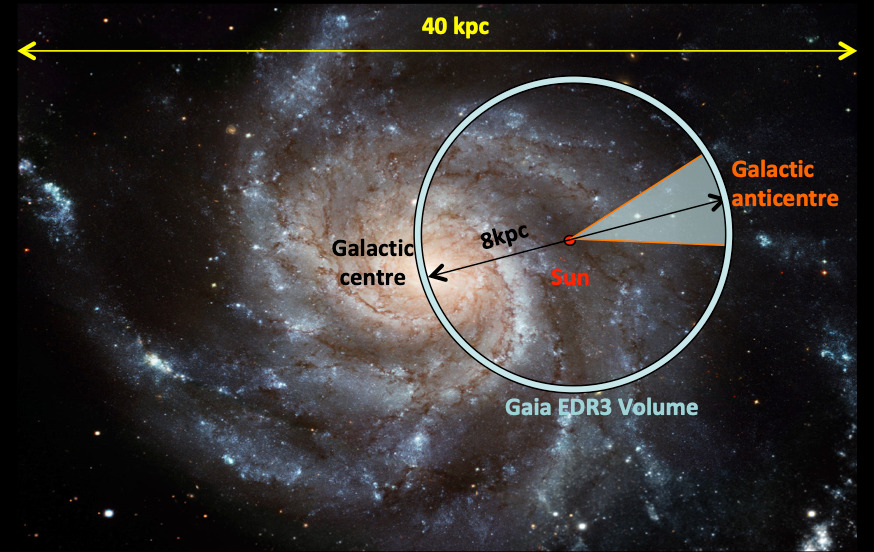

Improvement in magnitude-period relationship for Cephids and RR-Lyrae stars comparing Hipparcos and Gaia EDR3.

Improvement in distances to globular clusters. A problem with globular clusters has been that we see the nearer stars of the cluster better than the further stars and this has biased distance estimates. That problem has now been fixed. There is also a completely independent distance determination becoming available for globular clusters. It is based on measuring the apparent contraction or expansion of the cluster as it moves away or towards us.
https://youtu.be/QKXhtzJLZlI
https://youtu.be/OodCR9BWqPQ
Large and small Magellanic Clouds
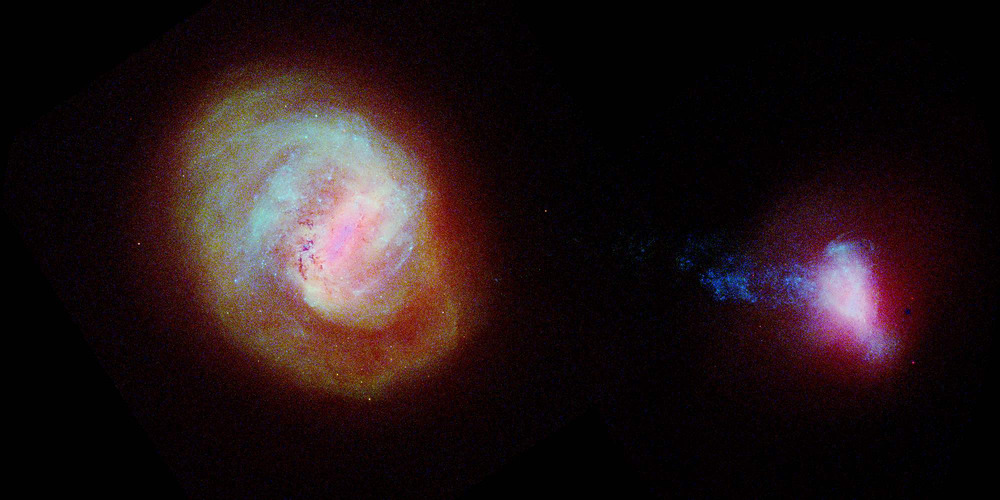
The slideshow presentation https://home.strw.leidenuniv.nl/~brown/gaia/gaia-edr3-summary.pdf is excellent, but hard to understand, so I’ll walk you through it.
In this graph, we have number of stars at each magnitude in the Gaia catalogue. Just look at the EDR3 lines. The top blue line is the number of stars in the catalogue, Gaia can’t see fainter than magnitude 21 so the number curs off there. The Vrad (radial velocity) dark green line is the number of stars with reliable redshifts. It drops off rapidly fainter than magnitude 13.

This graph gives the accuracy in micro-arc-seconds of the angular motion of the stars. The thick dark green line is the one to watch. The error in parallax is the same.
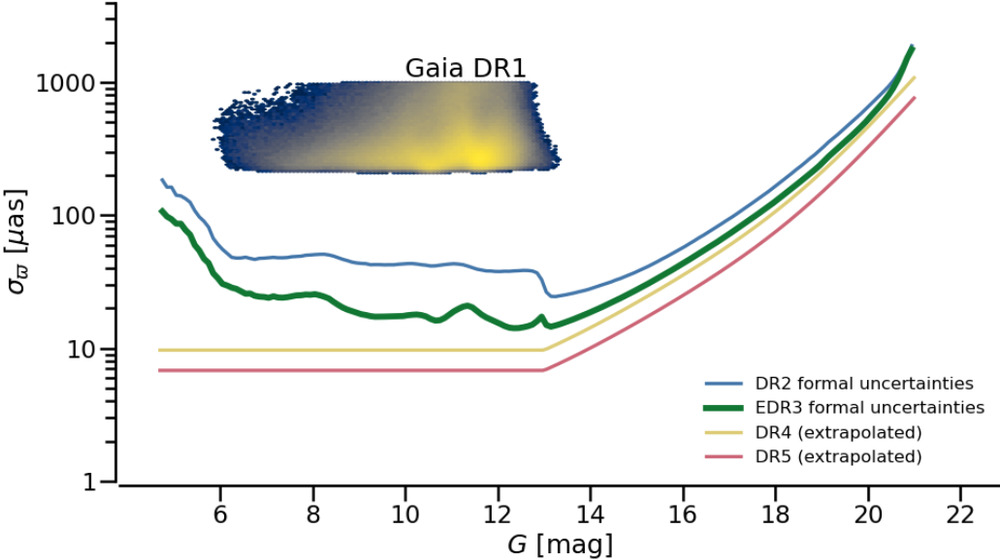
This graph gives the accuracy of magnitude measurements, separately for wideband visual G, and for blue and red colour bands. Look at the thick lines on the graph. For visual, the accuracy in magnitude is up to 10^-3.7 which is an accuracy of one part in 5,000.

This graph tells us about the Milky Way. These are radial velocities of stars (relative to Earth). Dominated by stars within +-100 km/s but with outliers out to +-600 km/s.
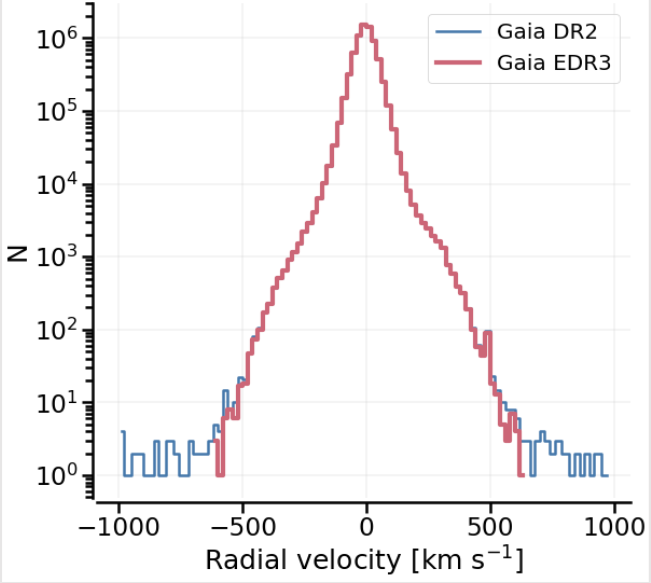
etc.
I, personally, find this article fascinating, though you may not.
Gaia Early Data Release 3 Summary of the contents and survey properties
One highlight is that they’ve found a way to remove alien spacecraft from their star dataset by placing a 180 mas limit on object movement.
Let’s summarise the differences between datasets.
Data release 1 – positions of stars, not enough data yet to refine velocities.
Data release 2. – positions and velocities of stars, each star must be viewed at least 5 times.
Data release 3-early – no change to star velocities (that will be in the 2022 release). Better star counting and positions. Much better software to eliminate errors, including such things as better removal of zodiacal light and better handling of binaries, variable stars, rapidly moving stars, and better removal of systematic errors. Better handling of stellar magnitude and colour.
So data release 3-early is better seen as a refinement of Data release 2 than as something brand new. Data release 3-early covers only the first 34 months of data. Gaia already has about 80 months of data, and will have something like 120 months of data when complete, so it’s still got a long way to go to before getting near a final data release.

